As anyone who has ever installed a cabinet knows, screw holes are a necessary evil. Unfortunately, they can also be a source of frustration, especially if they’re not properly prepared. In this blog post, we’ll show you how to fix screw holes in cabinets so that they’re both functional and attractive. Let’s get started!
Summary: Fix screw holes in cabinets the easy way with this simple tutorial! Start by locating the screw hole and using a drill bit to create a small hole. Use a screwdriver to remove the old screw, and replace it with a new one. Make sure the screw is tight, and then finish by drilling a second hole in the opposite direction.

What Are Screw Holes in A Cabinet?
Most cabinets have four screw holes in the back, two at the top and two at the bottom. These are for attaching the cabinet to the wall. The top holes attach the cabinet to a stud in the wall, while the bottom holes are used to secure the cabinet to drywall with wall anchors.
The screw holes for cabinets are usually located one inch from the top and bottom of the cabinet, and they are spaced about 16 inches apart. If your cabinet does not have screw holes, you can either drill your own holes or use adhesive tape or Velcro strips to attach the cabinet to the wall.
Just be sure to use strong tape or Velcro strips that can support the cabinet’s weight.
Why Might You Need to Fix Screw Holes in Cabinets?
Leave large holes in cabinets that can become damaged for a variety of reasons. Over time, screws can loosen and fall out, leaving behind large holes. If the cabinets are not properly supported, they may sag and strain the screw holes, causing them to enlarge or break.
There are a few different ways to fix screw holes in cabinets, depending on the severity of the damage. For example, if the cabinets are made of softwood or particle board, the screw holes may begin to strip, making it difficult to insert or remove screws. In this case, it is necessary to fix the screw holes to prevent further damage to the cabinets.
There are a few different ways to repair a stripped screw hole in a cabinet. For example, if the hole is small, you can try using a larger screw. If the hole is large, you can try using wood putty to fill in the hole. If the hole has broken through to the other side of the cabinet, you will need to use a stronger repair method, such as doweling or plugging.
No matter what type of repair you choose, fixing screw holes in cabinets as soon as possible is important to prevent further damage.
9 Ways to Follow on How to Fix Screw Holes in Cabinets
If you’re looking for an easy way to repair screw holes in cabinets, then this guide is for you. We’ll show you how to fill in the holes and make them disappear, so your cabinets will look good as new.
1. Use Wood Putty
If the screw holes in your cabinets are relatively small, you can use wood putty to fill them in. Simply apply the putty to the hole, then use a putty knife to smooth it out. Once the putty is dry, you can sand it down and paint or stain over it to match the rest of your cabinets. You can also use wood putty to fill in small cracks or holes in the wood of your cabinets. Simply apply the putty to the crack and then smooth it out with a putty knife. Allow the putty to dry, then sand it down and paint or stain over it to match the rest of your cabinets.
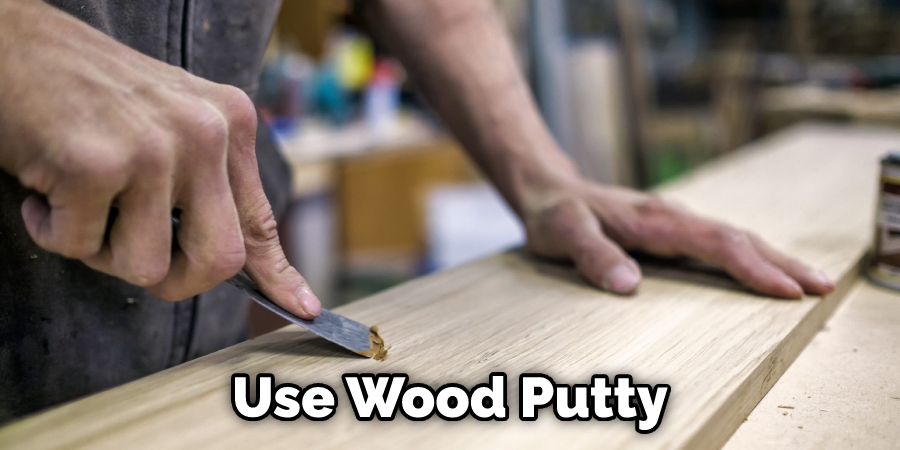
2. Use Wooden Dowels
Another option for filling in screw holes is to use wooden dowels. First, drill a hole slightly smaller than the dowel itself into the cabinet to do this. Then, insert the dowel into the hole and use wood glue to secure it. Once the glue is dry, you can trim the dowel to be flush with the cabinet and sand it down.
3. Use a Cabinet Repair Kit
If you have cabinets made out of particle board or another material that is difficult to repair, you can buy a cabinet repair kit. These kits come with everything you need to fix damaged cabinets, including screws, plugs, and putty. You can follow the instructions in the kit to complete the repairs.
4. Use Cabinet Doors
If the screw holes in your cabinets are located near the edges, you may be able to cover them up with cabinet doors. Simply remove the doors from the cabinets and reattach them to cover the holes. You may need to use a drill to create new holes for the screws, but this is a simple and effective way to repair damage to your cabinets.
5. Use a Cabinet Refacing Kit
If your cabinets are severely damaged, you may consider using a cabinet refacing kit. This will allow you to completely replace the doors and drawer fronts of your cabinets and the side panels. You will also need to purchase new hardware, but this major project will give you brand new cabinets.
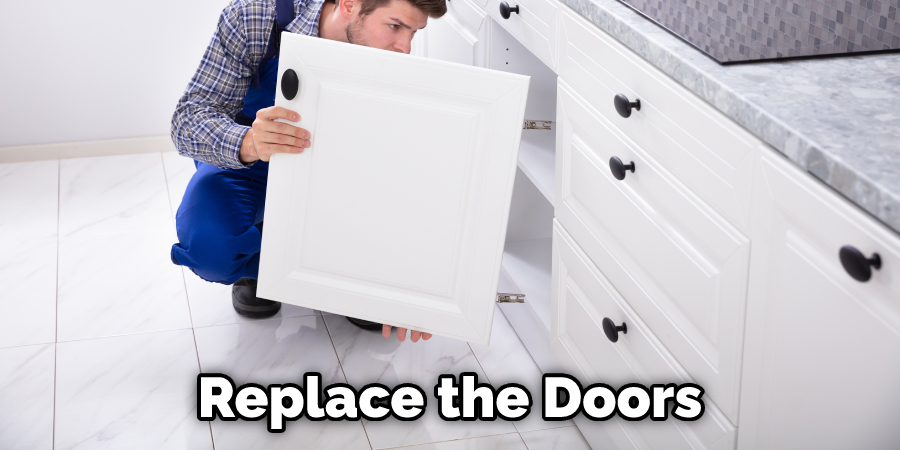
6. Use Wood Glue
If the screw holes in your cabinets are large, you may need to use wood glue to repair them. Simply apply the glue to the hole and then insert a piece of wood into the hole. Once the glue is dry, you can sand it down and paint or stain over it.
7. Use Cabinet Hinges
If the screw holes in your cabinets are located near the hinges, you can use cabinet hinges to cover them up. Simply remove the hinge from the cabinet and reattach it to cover the hole. You may need to use a drill to create new holes for the screws, but this is a simple way to repair damage to your cabinets.
8. Use Crown Molding
Crown molding is a great way to cover up damage to your cabinets and make them look new. Simply add crown molding to the top of your cabinets, covering any holes. You can then paint or stain the molding to match the rest of your cabinets.
9. Hire a Professional
If you’re not confident in your ability to repair the screw holes in your cabinets, you can always hire a professional. Cabinet makers or carpenters can fix the holes quickly and easily, and they may even be able to match the finish on your cabinets so that the repairs are virtually invisible.
That’s it! You’ve now learned how to fix screw holes in cabinets. Use these tips and tricks to repair your own cabinets, or hire a professional if you’re not confident in your abilities.
No matter how you choose to repair screw holes in cabinets, it’s important to take care of the problem as soon as possible. Otherwise, the holes will only get bigger and more difficult to fix. However, with a little time and effort, your cabinets can look new again.
How to Fix Stripped Screw Holes in A Cabinet
If your cabinet has stripped screw holes, there’s no need to replace the entire piece of furniture. Instead, you can easily repair the damage with a little time and elbow grease. Here’s what you’ll need to do:
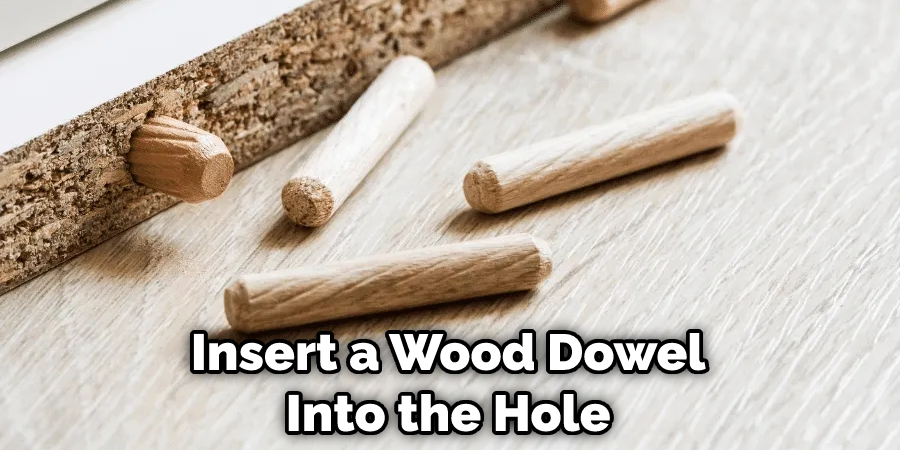
- Start by drilling out the stripped screw hole with a slightly larger drill bit. Be careful not to drill too deeply or damage the surrounding wood.
- Once the hole is drilled out, insert a wood dowel into the hole. Cut the dowel so that it’s flush with the surface of the wood.
- Finally, use strong wood glue to glue the dowel. Allow the glue to dry completely before reinserting a screw into the newly repaired hole.
How to Fix Screw Holes in Cabinets Using a Clamp
Over time, screw holes in cabinets can become enlarged and prone to stripping. This can make it difficult to keep doors and drawers securely closed. Luckily, there is an easy way to fix this problem using a clamp. First, remove the screws from the cabinet door or drawer.
Next, position the clamp over the enlarged screw hole and tighten it until snug. Then, insert a new screw into the hole and tighten it until snug. Finally, remove the clamp, and you’re done! With this simple fix, you can keep your cabinet doors and drawers securely closed for years.
What to Do if The Cabinet Hardware Is Damaged
If the cabinet hardware is damaged, a few things can be done to fix it. First, try to find a replacement that is the same size and shape as the original. If that is not possible, sand down the area around the damage and apply a fresh coat of paint. If the damage is more severe, it may be necessary to replace the entire piece of hardware.
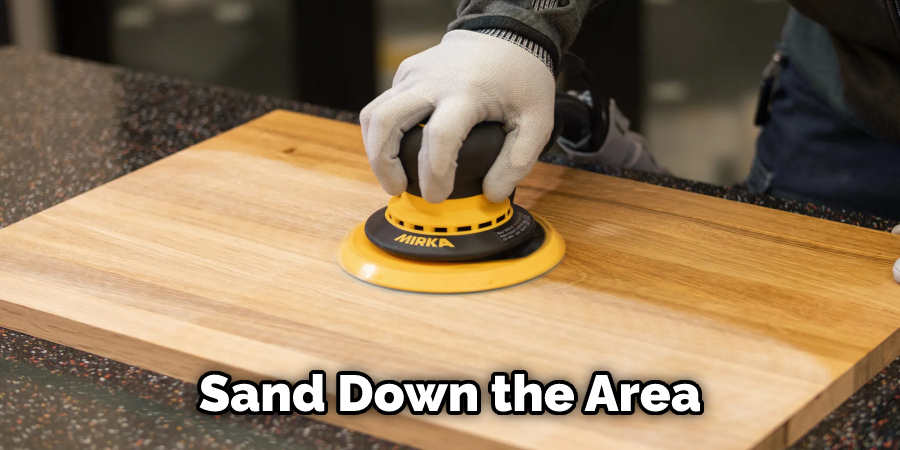
In any case, it is important not to damage the surrounding area when trying to fix the cabinet hardware. With a little patience, it is possible to repair or replace cabinet hardware without causing further damage.
Tips for How to Avoid Stripped Screw Holes in The Future
If you’ve ever had the misfortune of stripping a screw hole, you know it can be a real pain to try and fix. But don’t worry; there are some simple tips you can follow to avoid stripping screw holes in the future. First, make sure you’re using the correct size drill bit for your screw. If the bit is too small, it can slip and strip the hole.
Second, always use a power drill at low speed when starting to drill the hole. This will help prevent the drill bit from slipping and stripping the hole. Finally, if you strip a hole, try using a larger drill bit to re-drill it. With these tips in mind, you can avoid stripped screw holes and make your next project a success.
How Do I Fix a Hole in A Cabinet That’s Too Small?
If you have a hole in your cabinet that’s too small, don’t despair! You can use a few simple tricks to make the hole bigger and make your cabinet look as good as new. First, take a sharp knife and score around the hole’s edge. This will help create a clean, straight line that will be easy to work with.
Next, use a hand saw or power drill to enlarge the hole. Start with a small opening and gradually make it bigger until it’s the right size for your needs. Finally, smooth out the edges of the hole with sandpaper to ensure a neat and professional finish. With a little time and effort, you can easily fix a hole in your cabinet that’s too small.
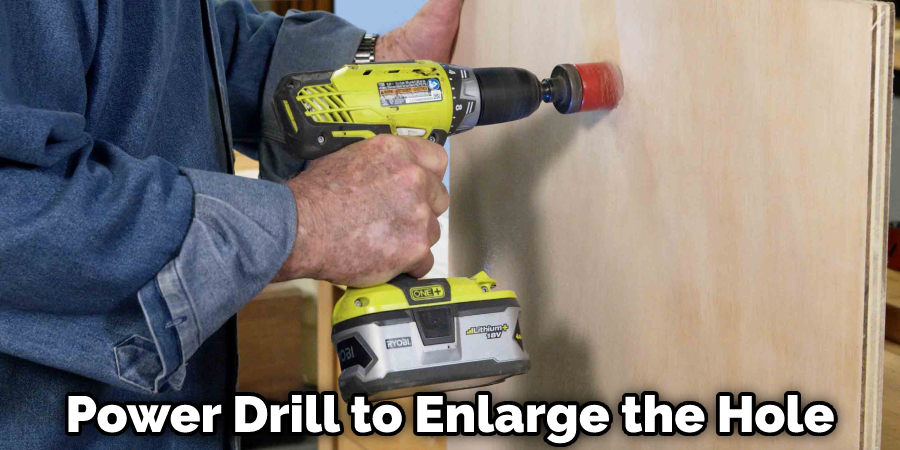
What Type of Screws Should I Use to Fix Screw Holes in Cabinets?
Screw holes in cabinets can be tricky to fix. If the hole is too big, the screw will simply spin without catching. On the other hand, if the hole is too small, the screw will strip and break. As a result, it is important to choose the right type of screw for the job. A #8 or #10 screw will work well for most applications.
These screws are strong enough to hold the cabinet door in place but also small enough to fit into most screw holes. In addition, it is important to choose a screw with a smooth shaft. This will help prevent the screw from stripping as it is being driven into the hole.
With a little care and attention, you can easily repair screw holes in cabinets using the right type of screws.
What Type of Putty Should I Use to Fill the Screw Holes?
There are many different types of putty out there, and it can be hard to know which one is best for filling screw holes. If you’re looking for a putty that will give you a strong bond and a smooth finish, then epoxy putty is the way to go. Epoxy putty comes in two parts that you mix, then hardens as it dries. It’s perfect for filling screw holes because it dries quickly and forms a strong bond.
Plus, it can be sanded down so that it’s completely smooth. If you’re looking for an alternative to epoxy putty, consider using wood filler. Wood filler is also available in two parts that you mix, but it takes longer to dry. However, it’s still very strong and gives a smooth finish. So, whether you choose epoxy putty or wood filler, you’ll surely get a great result!
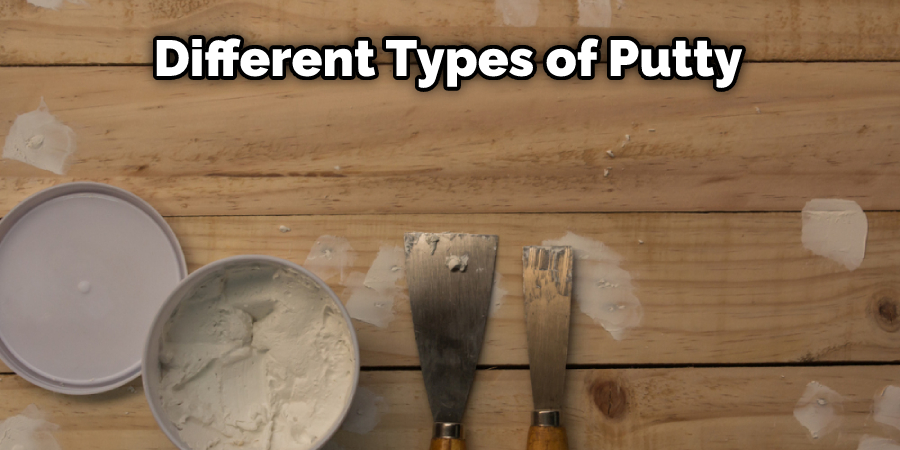
Frequently Asked Questions
What Do You Use to Fill Screw Holes?
There are a variety of products that can be used to fill screw holes, including epoxy, silicone, and JB Weld. Epoxy is the most common choice because it is both durable and flexible. Silicon has a high resistance to heat and cold, making it ideal for applications where temperature extremes are a concern. JB Weld is versatile enough that it can be used in many different circumstances but may not last as long as other options.
Do You Fill Screw Holes in Wood Cabinets?
Depends on the specific cabinet model and the type of screws that are being used. In general, it’s usually a good idea to fill screw holes with wood filler or putty so that the screws don’t show and the cabinet looks more uniform.
Is Spackle Strong Enough to Hold a Screw?
While Spackle was not designed to be a structural filler, it may be able to hold a screw in place if properly applied and fastened. This is because the adhesive properties of Spackle help bind the wood together and resist separation. Additionally, since Spackle is an oil-based paint, it can provide insulation and sealant qualities that may prevent moisture from entering or seeping out of the joint.
If you are looking for an inexpensive way to fix small holes or cracks in your wall or floor, then using Spackle might be a good solution for you. Just make sure that you follow the instructions carefully (including adding enough water) and wait until it has dried completely before replacing any object(s).
What is the Difference Between Wood Putty and Wood Filler?
Wood putty is a paste made from water, clay, and wood slag that is used to fill in holes or cracks in lumber. It can be applied with a push broom, grabber tool, or sprayer. Wood filler is similar to wood putty but has additives that make it more flexible and easier to work with. It also dries faster than traditional wood putty and can be painted or stained after it’s been applied.
Conclusion
So, there you have a few simple ways to fix screw holes in cabinets. If your cabinet looks a little worse for wear, don’t worry – these tips will help you get it back into shape in no time. Thanks for reading our post about how to fix screw holes in cabinets. Have you tried any of these methods before? What worked best for you? Let us know in the comments!
You May Also Read: How to Fix Hole in Cabinet Door
